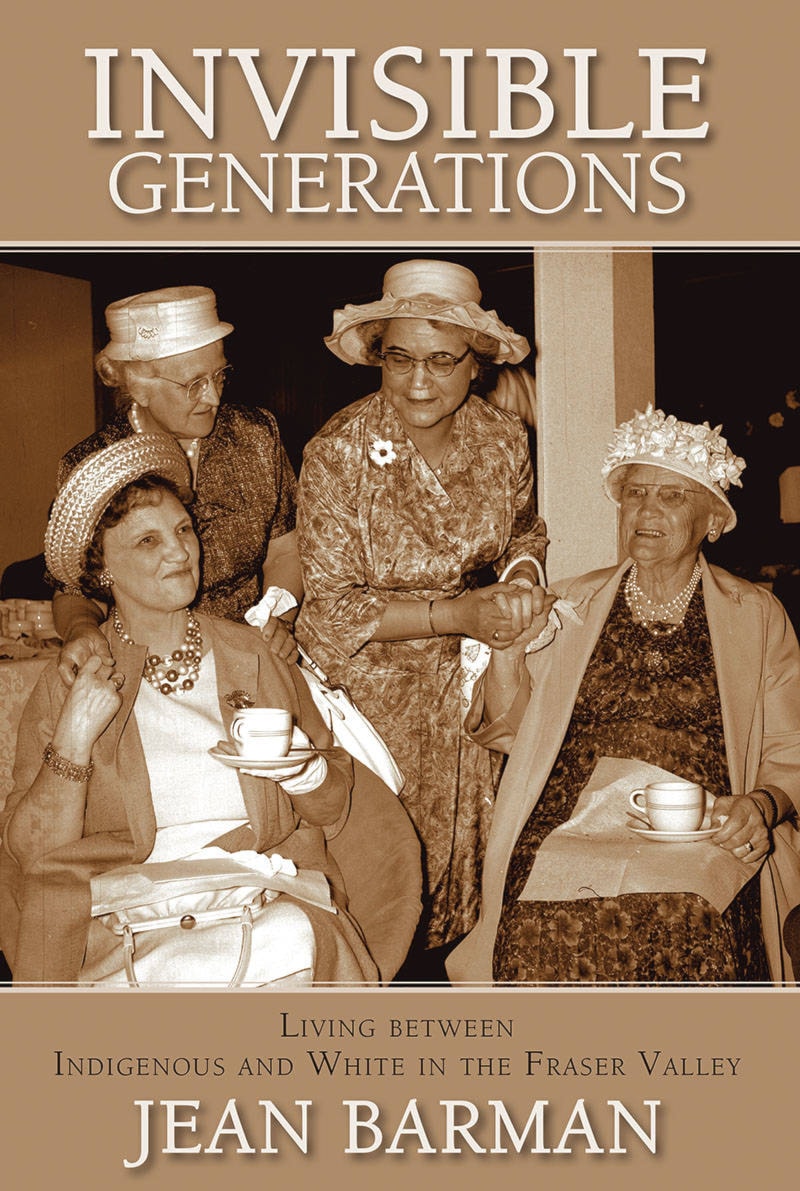A new book profiling three generations of a family of mixed Indigenous and white descent includes a short account of the years Irene Kelleher spent teaching Doukhobor children.
Jean Barman’s Invisible Generations: Living Between Indigenous and White in the Fraser Valley was inspired by conversations she had with Kelleher, who was born to two mixed-race parents.
Kelleher is believed to be the first B.C. woman of Indigenous heritage to be awarded a teaching certificate. Her time in the West Kootenay forms a brief but significant part of the book.
She spent the 1920s teaching in several remote schools in B.C. before taking a course on “Teaching English to New Canadians,” designed for Doukhobor children.
Schooling had by then become a central point of conflict between the government and Doukhobors, who feared it would indoctrinate their children with militaristic values they abhorred. Schools, including many built by Doukhobors themselves, became targets for destruction by fanatics.
Kelleher went to Glade in 1930 to take charge of 33 students in Grades 1, 2, and 3.
“To do so was a brave undertaking for anyone, even more so for a 30-year-old woman on her own,” Barman writes.
The school there burned down in 1929 and was replaced with an $18,000 brick structure, including accommodation for two teachers. On July 4, 1930, a dynamite explosion left the building in ruins. While the Doukhobor community pledged to repair the damage, it wasn’t the last of the trouble.
Kelleher was in the school when someone set off a home-made bomb about 20 feet away on Dec. 17, 1931.
“Miss Lentsmann and Miss Kelleher, both teachers at the school … were inside the building but were not injured, nor was the school damaged,” The Vancouver Sun reported.
“[D]uring my first Christmas there, someone threw blasting powder at the school,” Kelleher recalled. “I’ll never forget the smell … and we spent the rest of the evening serving coffee to the policemen who came to protect us.”
In February 1932, someone hurled another bomb at the building while Helen Lentsmann was in her quarters (Kelleher was spending the weekend in Nelson). No damage was done, although the explosion left a crater in the snow.
A month later, yet another bomb went off while guards were inside, but damage was limited to a hole torn in the porch and broken windows.
As Barman writes: “A brave Irene found the situation at Glade tolerable because she taught alongside an Estonian woman [Lentsmann] who spoke … Russian. All the same, despite guards to prevent burnings and bombings, Irene was so afraid to leave the teacherage that she had someone else go to the post office for her to pick up and mail letters and parcels.”
(Lentsmann was one of three people killed in 1939 when a car plunged 150 feet over a bank and into the Kootenay River at Brilliant.)
In 1933, Kelleher moved to a new school at the Doukhobor settlement of Kamennoye, across the Kootenay River from Brilliant, close to where the airport is today. She remained there until 1935 and found her time more peaceful, but attendance was poor, as unhappy parents withdrew their children.
Kelleher took 1936 off of teaching. When she returned, it was to a school west of Quesnel. In 1937-38, she came back to the Castlegar area and taught at Pass Creek. She was named principal at Ootischenia in early 1939, but during the Easter break, the school was bombed.
“The school is a double building, one part serving for the school and the other providing residence for the three teachers, Miss Beatrice French, Miss Wilma Milne of Nelson and Miss Irene Kelleher,” wrote the Spokane Spokesman Review. “The veranda was blown off this building and the windows broken.”
Keller accepted a less dangerous teaching position in Abbotsford and remained there for the next 25 years. Still, the experience with Doukhobor children stayed with her.
“Teaching there was a real challenge and provided a great deal of satisfaction,” she recalled upon her retirement in 1964. Irene Kelleher died in 2004 at 103.
